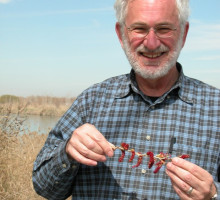
Reviews
The book is witty and full of commonsense. It is a jolly good read for anyone.
Whether this is your passion or merely something you might be interested in learning about, check out The Quick Guide to Wild Edible Plants... Should I ever get a craving for stinging nettle omelet or black locust fritters, I will know exactly which wild edible plant book to look in.
Dr. Musselman is a passionate botanist. Walking among plant life makes him very happy, which means he is happy most of the time, except when riding in a car stuck in a long tunnel. He will stop people on the street to tell them some great news from the plant world.
Drawing from a lifetime of foraging experience, Musselman and Wiggins expand the reader's food gathering repertoire with simple recipes and a fascinating assortment of plants largely overlooked by the wild food literature.
Book Details
Acknowledgments
1. Introduction
Wild Plants as Food
Before You Begin
Emergency Food
How to Use This Book
Guidelines for Using the Recipes.
About Flavorings, Sweeteners, and Oils
Beverages
Recipes for Failure
2
Acknowledgments
1. Introduction
Wild Plants as Food
Before You Begin
Emergency Food
How to Use This Book
Guidelines for Using the Recipes.
About Flavorings, Sweeteners, and Oils
Beverages
Recipes for Failure
2. Deadly Harvest
Poison Ivy, Poison Oak, Poison Sumac
Poison Hemlock
Mushrooms
3. Nature's Storehouse of Edible Plants
4. Condiments
Sassafras
Field Garlic
5. Aperitifs
Swamp Bay
Red Spruce
6. Greens
Chicory
Curly Dock
Glasswort
Kudzu
Stinging Nettle
Black Walnut
7. Starches
American Lotus
Arrowhead
Groundnut
Nut Sedge
Oaks
Softstem Bulrush
Spring Beauty
8. Grains and Plants Used Like Grains
Cane
Manna Grass
River Oats
Yellow Pond Lily
9. Flowers
Black Locust
Cattails
Orange Day Lily
Redbud
10. Sweets
Indian Strawberry
Pawpaw
11. Cordials
Blueberries
12. Mushrooms
Oyster Mushroom
Chicken of the Woods
Puffballs
Index of Recipes






